Finding a suitable email marketing tool for your business requires plenty of research. And not just a price comparison. You need to carry out a comprehensive feature-by-feature comparison to find the tool that meets your pain points.
MailerLite and Moosend are both budget-friendly and effective email marketing tools.
Most of the features in standard email marketing software are available in both MailerLite and Moosend. This includes automation, a form builder, segmentation, landing pages, analytics, etc.
But in this MailerLite vs. Moosend analysis, we’ll go deeper into the finer details of these features to find the right tool for your business.
MailerLite vs Moosend: Quick overview
In this MailerLite vs. Moosend analysis, we’ll compare the features of each tool that’ll help drive successful email marketing campaigns for your business.
We’ll see which tool offers the best functionality that can fuel the growth of an ecommerce business. So, let’s get into the details.
MailerLite vs. Moosend comparison: Feature by feature
Let’s dive into the fine details of these features.
Ease of getting started
Which one will give you an easier time getting started, MailerLite or Moosend?
MailerLite
Setting up your account on MailerLite is easy—pretty standard questions need to be answered.
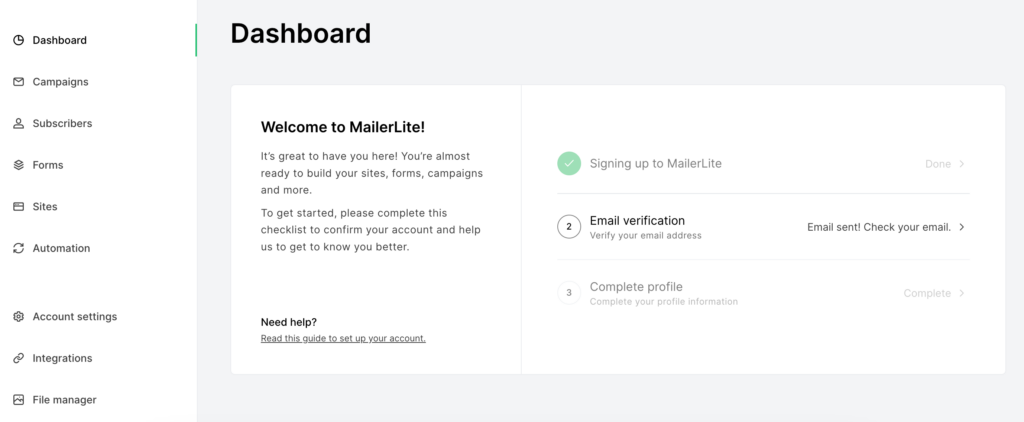
To avoid bad actors, the platform uses manual account confirmation. This is okay if you’ve settled on MailerLite as your email marketing tool. But if you’re still considering other alternatives and only want to give it a test drive, this is a stopper worth keeping in mind.
The good thing is that you don’t need to provide your credit card details to get started. And once you’re in, navigating the platform is child’s play.
The settings are easy to access and use.
The interface is extremely clean and intuitive. Everything is grouped in a logical order and all settings are labeled using straightforward names. This makes it easy to access what you need in a few clicks. For instance, you can change the sender’s email in the “My Profile” section — it’s where you’d expect it to be.
Moosend

You don’t need a credit card to create a Moosend account. The process is also easy and smooth.
There are five steps you’ll take when finalizing your account setup:
- Connect your ecommerce store
- Set up your first email list
- Import subscribers
- Set up a “From” name for your first campaign
- Create the first campaign
Generally, Moosend is easy to use.
However, the unique wording used for standard categories and functions can make things a bit complex. For instance, automation templates are known as ‘recipes,’ forms and landing pages are known as ‘growth tools.’
Another weakness is that the user interface isn’t as modern as what you’ll find with other tools like Omnisend, Klaviyo, and MailerLite. You do get used to it though.
A few settings are complicated. Something as simple as changing the sender’s email address requires you to set up SPF/DKIM first. For an email marketing beginner, this can be a headache.
Whether you’re a beginner in email marketing or an expert, MailerLite is pretty easy to set up and use — which is why MailerLite wins of the first round.
Building an email campaign
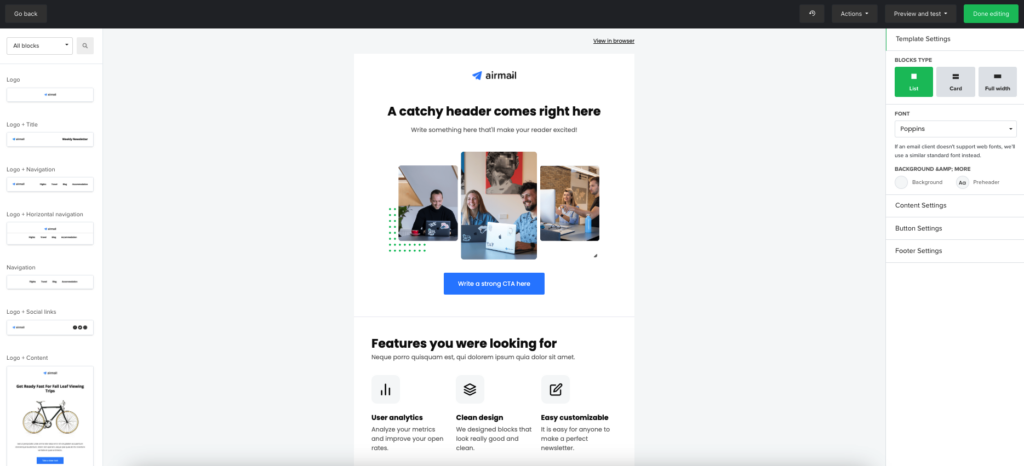
Both tools provide powerful features to build effective email campaigns. Let’s break the features down and compare them.
It’s a tie. Where one tool fails, the other succeeds.
MailerLite, for instance, has a more intuitive campaign builder than Moosend does. It also has a wider variety of content blocks to suit the purpose of your campaign.
But Moosend shines in personalization with its superior capabilities that are also easy to use.
Marketing automation
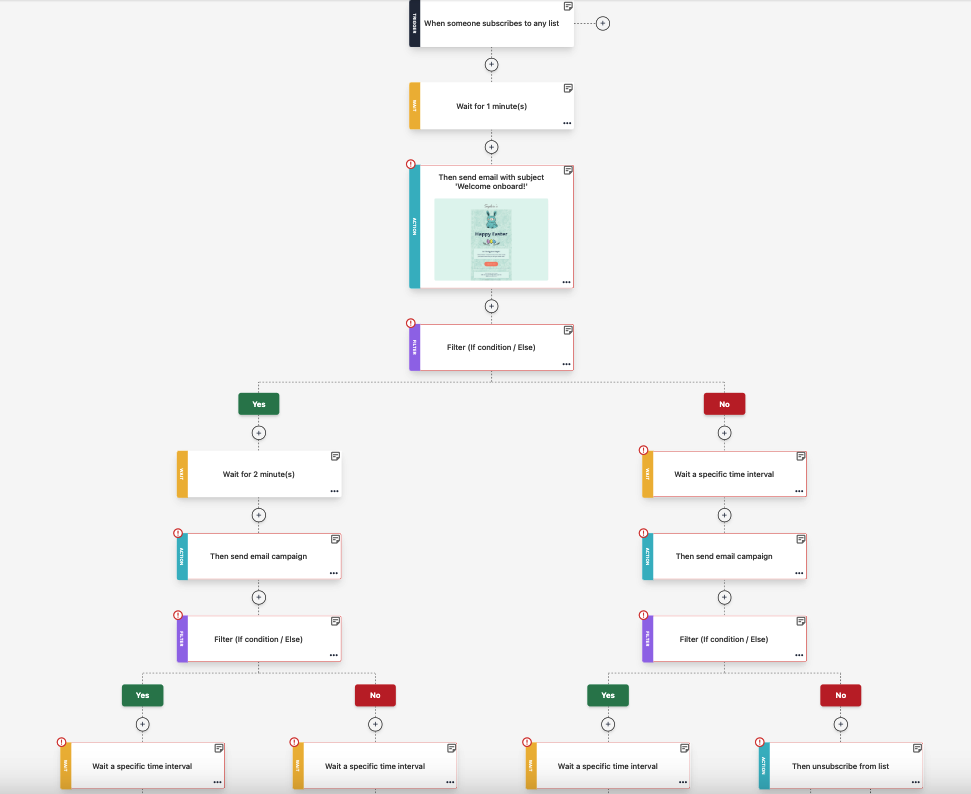
How does the marketing automation for MailerLite and Moosend compare?
There’s no doubt Moosend is the king here. Offering both email and onsite behavior triggers is a big plus for ecommerce store owners.
Signup forms and landing pages
Signup forms and landing pages are essential tools for lead generation and targeted marketing. How do MailerLite and Moosend compare? Let’s see.
MailerLite
MailerLite is an excellent tool for signup forms and templates to build your email list. You can create:
- Signup popups
- Promotion popups
- Embedded forms
- Half-screen forms
- Narrow bars
You can create forms from 24 modern templates and add reCAPTCHA to them. A beginner-friendly WYSIWYG (what you see is what you get) editor lets you edit your forms to fit your brand.
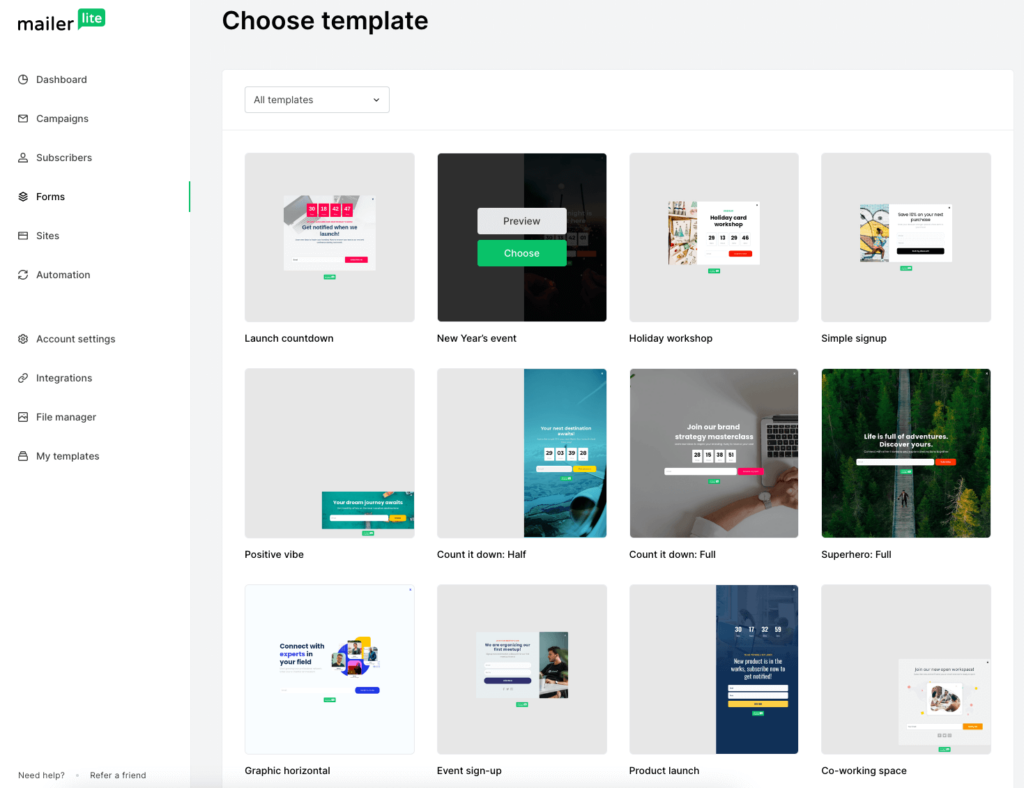
Analytics are available for your forms. You can check the real-time performance of your forms with metrics like:
- The number of subscribers
- Number of views
- Conversion rates
You can do A/B tests to see which form is bringing in the best performance.
A unique feature that MailerLite has is the iPad Subscribe App.
You’re able to create customizable forms within the app that you can use to collect leads offline, for instance, during offline events. The forms are directly connected to your MailerLite account.
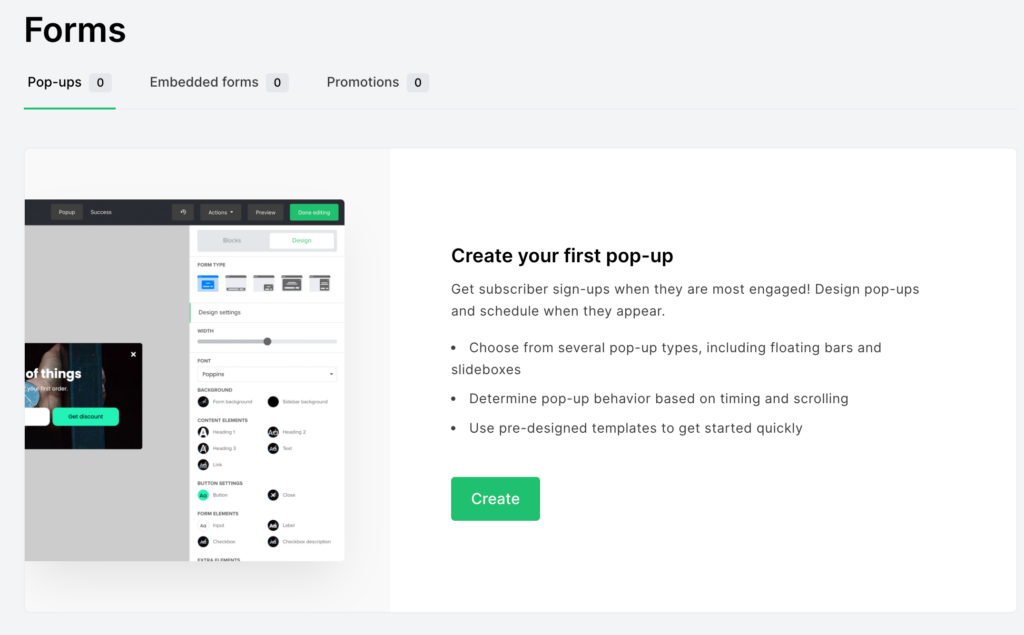
Landing pages are available. They’re in the Sites section where you’ll also find the website builder. You can access 49 modern and customizable landing pages that you can edit with their intuitive editor.
In general, list management is uncomplicated. You can easily import and map your contact data. Unlike Mailchimp, MailerLite doesn’t count duplicate contacts, preventing you from paying extra for contacts appearing in more than one list.
In addition, MailerLite has an email verifier that cleans and optimizes your email list to give you high deliverability rates.
Moosend
Moosend also lets you create promotional popups, inline forms, floating bars, full-screen forms, floating boxes, and more.
It also offers plenty of conditions you can set to display your signup forms, which is an excellent feature for ecommerce stores.
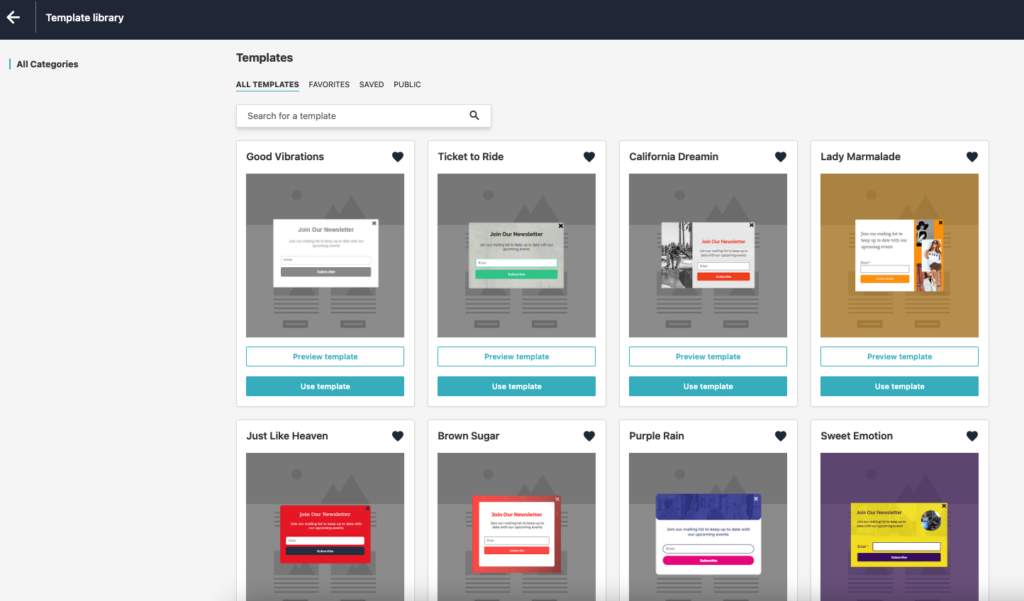
You get 11 modern and customizable popup templates, which is quite low compared to the 24 templates you get with MailerLite.
But it has a distinguishing feature — you can gamify your popups with the Wheel of Fortune, a feature you can’t get with MailerLite. It’s only available in other top email marketing tools like Omnisend.
With Moosend, you can also add reCAPTCHA and set GDPR-compliance.
The forms come with analytics like:
- Number of impressions
- Conversions
- Conversion rate

Moosend also offers a landing page feature. But again, you only get 38 customizable landing page templates which are fewer than what you get with MailerLite.
List management is not complex. You can import and map your contact data easily.
Design-wise, MailerLite offers better forms and more user-friendly form builder. So in this round, MailerLite wins.
Segmentation
List segmentation helps you send personalized emails to your audience, which can improve their overall experience and drive more conversions.
MailerLite
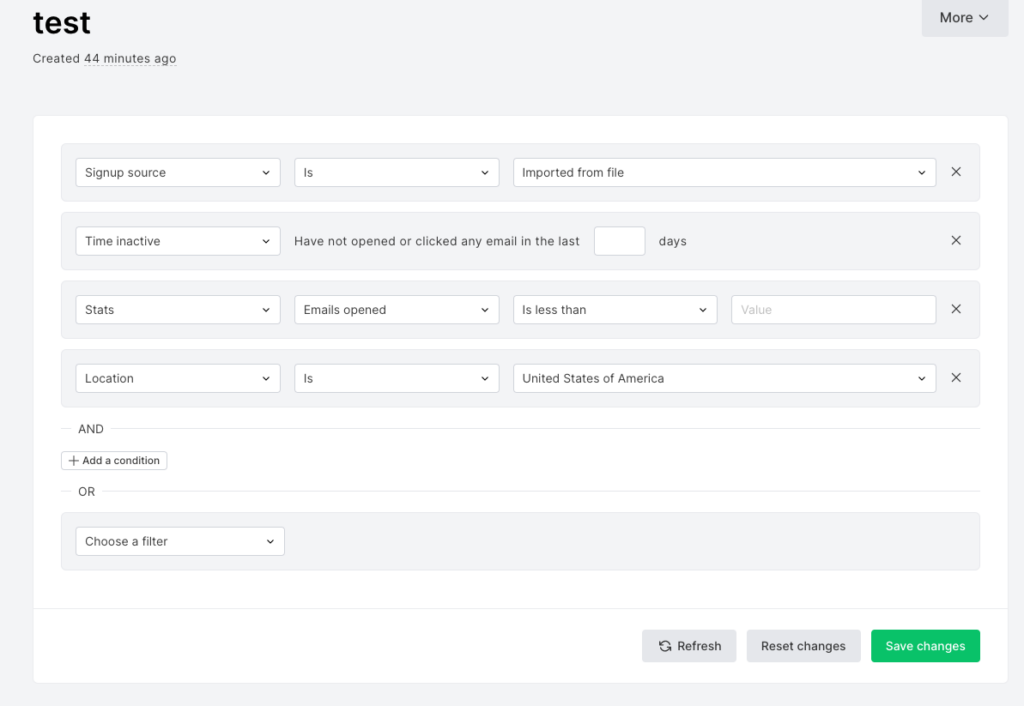
We found segmentation with MailerLite a bit basic. On the platform, you’ll find pretty basic criteria, like location, signup source, email engagement and campaign data. MailerLite lacks ecommerce-focused criteria. In addition to that, pre-built segments are lacking.
Moosend
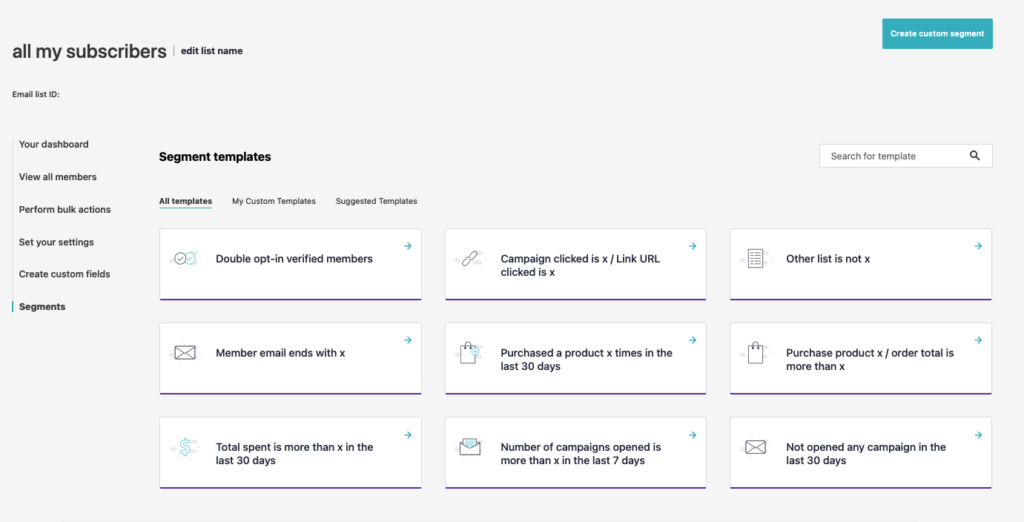
Meanwhile, Moosend offers more extended segmentation capabilities.
You can segment your lists based on:
- Campaign data
- Purchase behavior
- Order value
- On-site behavior
- Demographics
Also, nine pre-built segments are available and you can start from there. This is a great help for less experienced marketers.
The lack of segmentation filters based on purchase behavior, lifetime value, or website activity is a huge weakness for MailerLite. Add to that the fact that it doesn’t have pre-built segments, and Moosend takes the crown.
Analytics
Analytics helps you optimize your email campaigns and get the best possible results. In a nutshell, they’re your pathway to increasing your ROI.
MailerLite
MailerLite offers the usual metrics like:
- Real-time performance of email campaigns and automation
- Subscriber engagement
- Devices used
- Popular links
- Total views, unique visitors, and contacts collected from landing pages
- Click maps
- Opens by location
- Top email clients
But if you link your ecommerce store, you can access insights like revenue, number of orders, and conversion rate. This is helpful for ecommerce store owners who wish to measure the ROI of their campaigns.
The reports are available in graphs and charts.
Moosend
With Moosend, you get mostly the same standard metrics — campaign engagement, devices, location, heatmap, etc. You can set up custom reports using any 10 of the 40 customizable widgets available. But this is only available in the Enterprise plan.
Both tools provide very similar reporting and they lack advanced ecommerce insights. So when considering which tool is better, reporting shouldn’t be your decision-maker.
Customer support
Having customer support available when you need onboarding assistance or face technical issues is an important factor to consider when choosing an email marketing tool.
Let’s compare the support these two tools offer.
It’s sad that MailerLite doesn’t offer live chat support to Growing Business plan users, even though it’s a paid plan. Additionally, support for free users is only available for the first 30 days, which is also quite limited.
Moosend offers email and live chat support to all its users, even during the trial period. So, clearly, Moosend wins.
Integrations
An email marketing tool with powerful integration capabilities means your marketing team won’t have to undertake manual data transfer or switch between multiple applications. This improves their efficiency.
MailerLite
MailerLite supports 140 integrations — most of them being signup forms, CRMs, and popups. But it lacks integrations with Wix and OpenCart.
That being said, its integration capabilities aren’t the best. And reviews from app stores like Shopify App Store show customers disappointed with the tool’s integration capabilities.
Moosend
Moosend supports 86 integrations, which is limited compared to MailerLite. These integrations cover CRM, lead generation, a CMS, list validation, and other ecommerce tools.
However, Moosend lacks a native integration with tools like Shopify and Wix. Native integrations with social marketing tools are also unavailable for Moosend. But unlike MailerLite, it has an OpenCart integration.
It’s a tie. Both tools need improvements on integrations.
Compatibility with other marketing channels
Both tools are dedicated solely to email marketing. Text messaging and push notifications aren’t available.
However, you can do Facebook retargeting with MailerLite (on the Advanced plan only). And with Moosend, the furthest you can go is adding a Facebook pixel to a landing page.
MailerLite’s support for Facebook retargeting makes it superior to Moosend, but it’s a small win.
Of course, it depends on how your business has matured, but an email marketing solution supporting channels like SMS, web push notifications, and Google retargeting would be ideal for business nowadays.
Price comparison
Naturally, the next stage is to compare the cost of each of these email marketing tools.
Something to keep in mind is that price isn’t the best criterion to select an email marketing software.
Some email marketing tools offer low-priced plans that lack the features you need to run effective email marketing campaigns.
That’s why we did a Moosend vs. MailerLite feature-by-feature analysis first before a price comparison.
Overall, MailerLite is by far the cheaper option. Even when you shift to the Advanced plan, it’s still cheaper than Moosend.
What makes MailerLite even better is that with a free plan, you can get features that can help you grow your ecommerce store, such as:
- Landing pages
- Email automation builder
- Segmentation
- A/B testing
- Analytics
With Moosend, you only get a 30-day free trial, after which you need to pay. The free trial comes with most of the features Moosend has to offer, except for features like transactional emails and some automation triggers.
It’s worth noting that Moosend has a mobile app available.
Summary: Which one wins? Moosend or MailerLite?
3.9
3.8
1,000 subscribers – $0
5,000 subscribers – $32
10,000 subscribers – $54
50,000 subscribers – $239
100,000 subscribers – $425
1,000 subscribers – $16
5,000 subscribers – $48
10,000 subscribers – $88
50,000 subscribers – $315
100,000 subscribers – $624
– 12,000 email sends
– Unlimited audiences
– 1 website
– Up to 10 landing pages
– Unlimited popups
– Unlimited segmentation
– Limited automation features
– A/B testing
– Full reporting
– 30 days trial of the vast majority of features. No free plan is available afterward
– Very easy to use even for beginners
– The price is very affordable
– A nice and clear design
– Beautiful email and landing page templates
– A lot of nice elements to include in your emails and signup forms.
– iPad subscribe app to collect leads while offline
– The paid plan comes with unlimited email sends
– The 30-day trial lets you test almost every feature Moosend has
– Pretty good segmentation
– A flexible email editor
– Gamification features for your forms
– Email builder supports team collaboration
– Few integrations with ecommerce platforms
– A strict new account approval process
– Lack of advanced reporting and automation features
– Lacks ecommerce-focused segmentation options
– No free plan available
– Unusual feature and category names
– The platform’s interface looks a bit outdated
– Poor compatibility with other marketing channels
– There is no native Shopify integration
– Bloggers
– Solopreneurs
– Non-profit organizations
– Startups
– Complete email marketing beginners
– Bloggers
– Solopreneurs
– Non-profit organizations
– Startups
– Complete email marketing beginners
– Ecommerce businesses
– Experienced marketers who wear many different hats at their daily work
– Ecommerce businesses
– Experienced marketers who wear many different hats at their daily work
So, which tool is the best for you? It’ll depend on the nature of your business.
However, both platforms are ready to cater to the needs of similar level businesses and organizations that are still on their way to establishing their marketing strategy and budget. Beautiful signup forms, email designs, and simple automations might be the right solution for you without paying for advanced and overwhelming platforms.
But if your ecommerce business has been around for some time and is in its active growth stage, you should look for more powerful alternatives.
Read full reviews
Related picks for you
Our team strives to be accurate and unbiased in reviewing email tools. However, we recognize that mistakes can happen, and it’s essential for us to stay up to date. If you come across any errors or things that need to be reviewed again, please let us know.





Leave a Reply